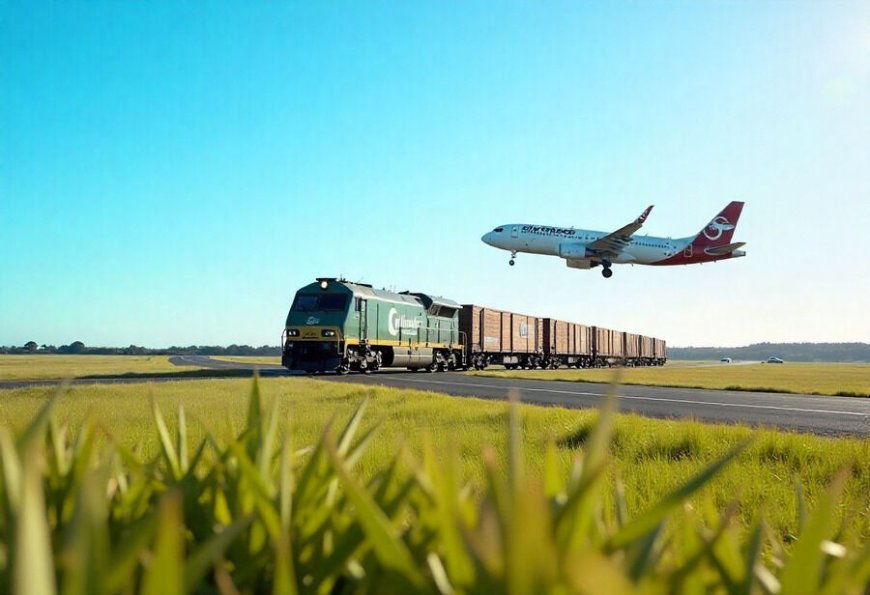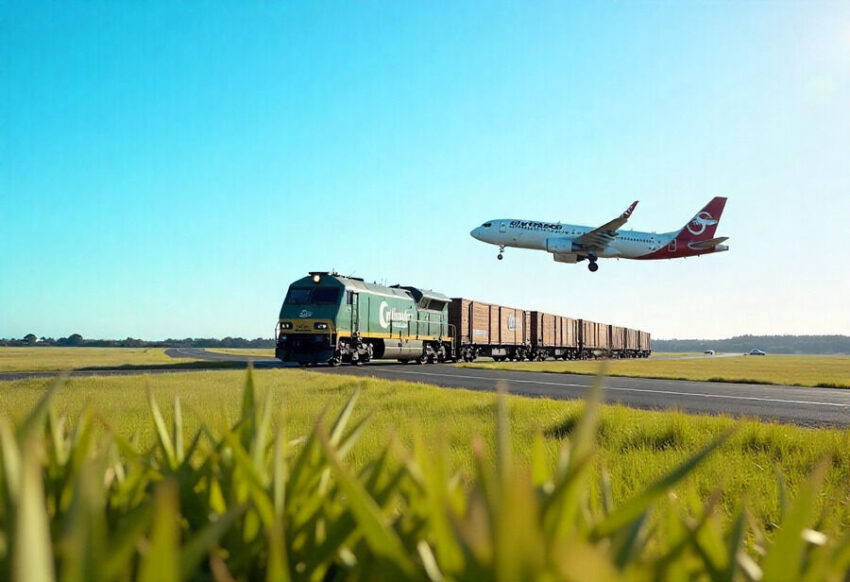Gisborne Airport in New Zealand is the only airport globally where trains and planes share the same runway, making it a remarkable and unique transportation crossover


Situated at the eastern edge of New Zealand’s North Island, Gisborne Airport (GIS) holds the extraordinary distinction of being the only commercial airport globally where an operational railway line intersects an active runway. This unique feature introduces a fascinating dynamic, requiring meticulous coordination between aviation and railway authorities. Trains and aircraft share a space that no other airport in the world can replicate, making Gisborne Airport a standout example of transportation ingenuity.
A Unique Infrastructure Challenge
Gisborne Airport’s standout characteristic is its runway configuration. The Palmerston North–Gisborne railway line crosses directly through Runway 14/32, creating a rare intersection between two distinct transportation systems. Trains running on this line pass through the airport multiple times daily, requiring scheduled halts for aircraft and vice versa. This interaction is managed with an exceptional degree of precision and cooperation, something not found in any other airport worldwide.
The primary carrier serving the airport is Air New Zealand (NZ), which offers over 60 domestic flights per week. While Gisborne is a small airport with an annual passenger volume of around 150,000, its role in regional travel is undeniably crucial. The presence of both air and rail transport at this single airport showcases how infrastructure can be designed to serve multiple modes of transportation in harmony.
Managing Shared Space: Trains and Planes in Harmony
Running an airport where trains intersect the runway requires unmatched precision and flawless communication between air traffic controllers and railway operators. Whenever an aircraft is scheduled to land or take off, trains are temporarily stopped to ensure the runway is clear. This requires careful scheduling to avoid conflicts and delays between the two forms of transport.
Each day, the runway is in use from 6:30 a.m. to 8:30 p.m., with both aircraft and train services operating on a tightly controlled timetable. During the night, the runway is closed to both trains and planes, allowing for maintenance and other operational adjustments. This well-planned synchronization is vital in ensuring safety and efficiency, with both systems effectively managing the shared space throughout the day.
Safety measures are also vital to the operation, as constant communication ensures the train services are halted while aircraft land or take off. This collaborative approach keeps things running smoothly, preventing potential issues between rail and air traffic.
A Glimpse into the Past: Gisborne’s Railway History
The railway line that crosses the runway has played an essential role in Gisborne’s history. Originally used as a freight route, the Palmerston North–Gisborne line now sees fewer freight trains and is primarily used for heritage rail runs and occasional services. While the frequency of rail transport has reduced, the railway still plays a significant role in the local infrastructure and continues to pass through the airport multiple times a day.
The inclusion of this historic rail service within the airport’s operations is what makes Gisborne Airport so distinct. The integration of both rail and air systems in such close proximity is a feature that has only been seen here, making it a rare example of how two major transport modes can coexist in the same space.
Ensuring Safety in a Complex System
Despite the inherent challenges, Gisborne Airport has developed a remarkable safety record, relying on the efficiency of its coordination systems. The airport has stringent protocols in place that govern how air and rail traffic operate together. Operators from both sectors—aviation and railway—work hand in hand to ensure that each train and flight arrives and departs without issues.
The coordinated operation depends on a reliable communication system, which is always monitored to ensure that the train services are held off when aircraft need to use the runway. Regular safety drills are conducted to maintain a high level of preparedness, ensuring both systems can interact without compromising safety. This precision in timing and coordination has helped maintain Gisborne Airport’s track record as a safe and operationally effective transportation hub.
The Last of Its Kind
Gisborne’s distinction as the only airport in the world with a railway line crossing an active runway makes it a one-of-a-kind transportation hub. In the past, Wynyard Airport in Tasmania shared a similar feature, where a railway line crossed a runway. However, that airport ceased its rail operations in 2005, leaving Gisborne as the only remaining airport with this extraordinary configuration.
Despite the challenges that come with this unique infrastructure, Gisborne has managed to continue operating without major incidents. This speaks volumes about the careful planning and design of its operations. The airport’s ability to handle both air and rail services on a shared runway shows that, with the right precautions, even the most unconventional transportation setups can work smoothly.
A Must-Visit Destination for Tourists and Aviation Fans
Beyond its operational significance, Gisborne Airport has become an iconic location for aviation enthusiasts, railway fans, and curious tourists. The sight of a train crossing a runway while an aircraft prepares for departure is a rare and thrilling spectacle. Tourists and aviation fans often visit the airport, hoping to capture the unique moment of seeing both trains and planes sharing the same space.
The rare and captivating nature of this interaction has made Gisborne Airport a social media phenomenon, with photos and videos of the rare sight circulating online. The airport has earned a reputation as a must-visit destination for those interested in the intersection of transportation systems, drawing visitors from all over the world who want to witness this remarkable feature in person.
Redundancy and Flexibility in Operations
While Gisborne Airport’s railway line crosses the runway, the airport is far from a one-dimensional facility. It spans over 160 hectares, with three additional runways available for operations. While none of these secondary runways intersect with the railway line, they provide additional operational flexibility, allowing the airport to maintain smooth operations even in the event of unexpected delays or issues.
This operational flexibility, combined with the primary runway’s unique design, allows Gisborne to function effectively despite the complexities involved. The availability of multiple runways ensures the airport can handle fluctuating traffic volumes without compromising safety or efficiency.
Conclusion: Innovation in Transportation
Gisborne Airport stands as a testament to innovative thinking in transportation infrastructure. Its unique configuration—where an operational railway line crosses a live runway—demonstrates that with precise coordination, even the most complex transport systems can coexist and function in harmony. The careful planning, communication, and collaboration between air and rail operators have made Gisborne Airport a success, and it remains the world’s only airport with such an intersection.
Gisborne Airport’s role as a regional transport hub, its historical connections to rail, and its growing reputation as a tourist destination all contribute to its uniqueness. In a world of rapidly evolving transportation systems, Gisborne stands out as a rare example of infrastructure ingenuity, proving that creativity and collaboration can yield innovative solutions, even in the most unconventional settings.
The post Gisborne Airport in New Zealand is the only airport globally where trains and planes share the same runway, making it a remarkable and unique transportation crossover appeared first on Travel And Tour World.






